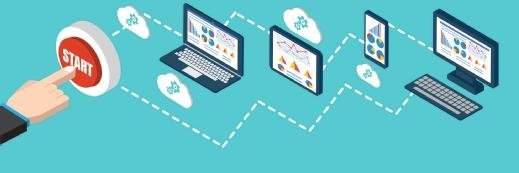
Eisenhans - stock.adobe.com
3 companies successfully monetizing IoT data
While many companies use IoT to increase efficiencies and save money, some are revamping their business model and monetizing IoT data via subscription services and digital products.
Companies today increasingly use the confluence of hardware, software, networking and analytics that is IoT to cull insights from the data collected from varied and numerous connected points. To date, most companies have used IoT to increase efficiencies and save money. Now, however, some companies are using IoT to develop subscription services and digital products that are in turn driving new revenue streams for them.
That business model, however, isn't an easy one to develop, making those companies already engaged in such pursuits on the leading edge of this aspect of the digital revolution.
"The ability to drive top-line growth remains an aspirational goal for many organizations, but has remained challenging," said Chris Rommel, executive vice president at VDC Research. "With all the talk about new service models and revenue streams, cost-savings use cases are what have had the most impact on the market to date. It is simply much easier for organizations to cost justify an IoT solution investment when they can back it up with a tangible cost model, as opposed to a hypothetical about the creation and expansion into a new market."
Yet, there are those companies out there that have had success upending their business models to monetize IoT data -- including some from very traditional industries.
Otis' IoT evolution
Otis Elevator Company's elevators and escalators move 2 billion people on any given day. As a result, the company has collected a trove of data on how people get around. Company executives believe that their data creates insights that have immense value -- and now Otis is putting those insights up for sale.
The company, which has sold elevators since its founding in 1853 and started selling maintenance about 10 years later, is ready to add the role of data provider to its résumé.
 Chris Smith
Chris Smith
"We can share this data and help others make peoples' experiences more seamless and efficient," said Chris Smith, vice president of product strategy at the company headquartered in Farmington, Conn.
The monetizable IoT data is collected from Otis-connected elevators and escalators, as well as from sensors and beacons positioned around them, and then analyzed alongside data from other sources. Combined, it has helped Otis find patterns in how people move.
The IoT story at Otis goes back decades, Smith said. The company first installed microprocessors in its elevators in 1985, before switching to printed circuit boards. It used dial-up modems to collect data from these connected elevators.
The data fueled -- and still powers -- its remote elevator monitoring program, which enables engineers to provide data to mechanics in the field as they work on the equipment.
The company's capabilities to collect data advanced as cloud computing, advanced sensors and more powerful networking equipment came into the market, Smith said. Those advances enable an IoT program that has expanded to include new services that would have been impossible just a decade ago.
Today, Otis collects increasing amounts of data about its equipment's performance, as well as the movement of people. And that data, especially when combined with other information, such as weather forecasts, can help Otis see past patterns and predict how people will move in the future.
"Now maybe we could tell coffee shops around a building about what they can expect on a good day, that people will be going there around 11:00 a.m. based on our historical data, so they might want to staff up," Smith said. "That's the kind of knowledge we have that we can start sharing, for a small fee, to help others run their own businesses more efficiently."
Otis has that productization of data already in the works, with Smith saying the company will roll out such IoT subscription services in the near future.
Otis also is developing infrastructure that will enable it to sell elevator and escalator performance insights to building operators who use their own mechanics to perform that physical work but still want the analytical insights that Otis can provide through its IoT capabilities.
Those offerings add to other IoT-enabled products Otis already sells. For example, Otis sells video content to its elevators via subscription, as well as data-supported maintenance and service contracts to clients. Otis also sells an end-user eCall app, which allows people to request elevator services via their smartphones from a distance, reducing wait time.
Industrial Age meets modern age at Schneider Electric
 Cyril Perducat
Cyril Perducat
Schneider Electric, a France-based company that dates back to 1836, has also embraced IoT monetization as a way to create new products as well as drive transformation across the company, said Cyril Perducat, executive vice president of IoT and digital offers.
Like Otis, Schneider Electric, a manufacturer of equipment for power management, has a long history of connecting its products. However, the company has advanced and accelerated its use of connected technologies as cloud, storage and processing became both cheaper and more powerful, Perducat said.
Schneider Electric is likewise putting its vast abilities to collect and analyze data into new subscription-based products, Perducat added. One such offering is its Building Advisor, a service that delivers insights to help building owners and managers run their facilities more efficiently and more comfortably for their occupants.
More on IoT data monetization
Four IoT monetization strategies
Choosing the right IoT monetization business model
Why mobile operators fail to monetize IoT
The company offers a similar product around electric asset management, with clients able to buy different subscription services based on the complexity of their needs, Perducat said.
He said such products show the company's evolution.
"The way our business evolved with IoT, we can productize resolutions to specific problems," Perducat said, noting that the company went from providing hardware to one that provided software, then systems and now digital services.
General Electric goes digital
 Steven Martin
Steven Martin
General Electric is another 19th century industrial giant monetizing IoT data to build a digital line of revenue.
"It came out of a mission to make us more efficient in our own systems," said Steven Martin, acting CEO for GE Digital, a subsidiary of the multinational conglomerate General Electric Co. "We applied a lot of [IoT] technology first to our own systems, then we productized it and made it available to customers."
Martin said the company believes it's an important evolution. "We believe our hardware will be differentiated by our software that will maximize results for our customers," he said.
Case in point is the digital service used by steel producer ArcelorMittal Construction. It uses GE Digital's Predix Manufacturing Execution System to get full visibility into its plant operations by taking data from its own equipment and facilities, as well as external sources, such as energy costs and supply chain information, and analyzing it to create the leanest possible operations.
More companies are expected to follow suit and use IoT to create new digital products to sell.
 Chris Rommel
Chris Rommel
"Many organizations are attempting to leverage IoT to establish new usage-based and subscription revenue flows," VDC Research's Rommel said in his 2018 report, "Four Pillars of a Successful IoT Evolution Strategy: A Research-based Guide to Reimaging Applications and Organizations for the IoT."
Rommel also highlighted challenges for organizations moving in that direction: "As transformational as these new business opportunities can be, they themselves pose a host of additional operational considerations given the resultant integration and convergence of IT, [operational technology] and sales workflows."






